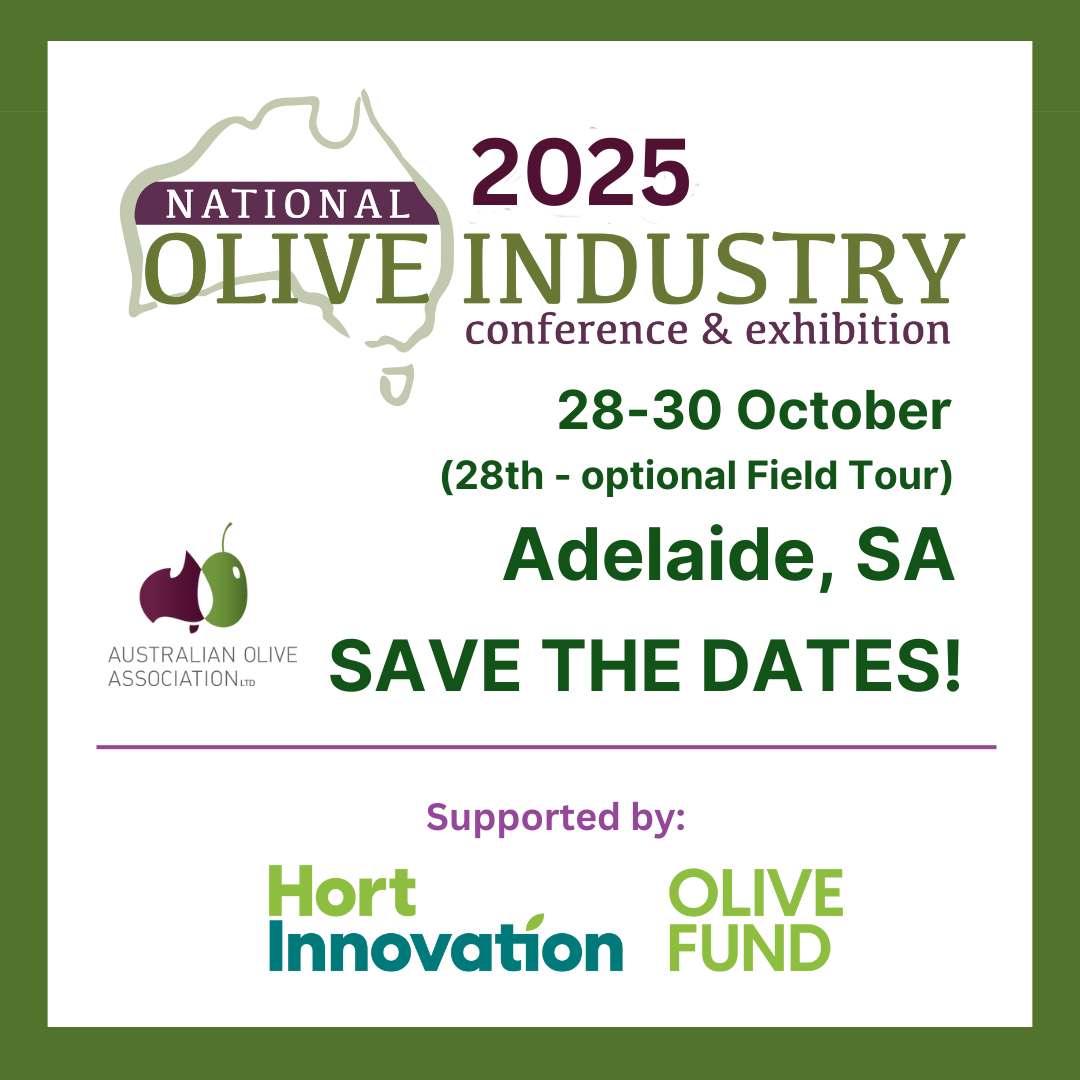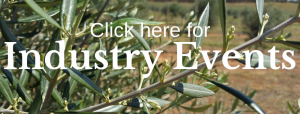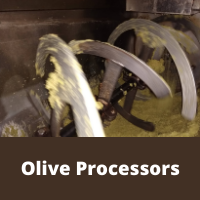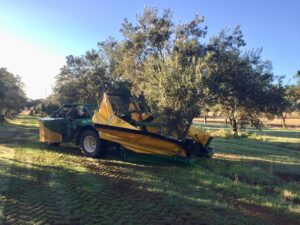
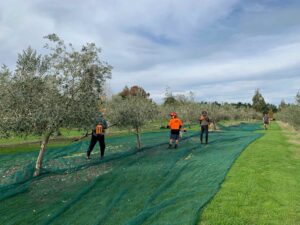
Arnaud Courtin and Jenny Baxter, York Olive Oil Co., info@yorkoliveoil.com.au
We have written this information to be practical and user-friendly, as good advice shouldn’t be unnecessarily complex! It is based upon our own experiences processing literally thousands of batches of olives since 2002.
First, the basics
Sound, fresh fruit will always produce a better quality oil than spoiled fruit (diseased, bruised, squashed, sweaty, mouldy, etc.)
It is the flesh of the olive fruit that gives us oil, not the skin. The colour of the skin of the olive is not a reliable indicator of the ripeness of the flesh inside. Unripe olives (green, with very firm flesh) will give a low yield of oil and the oil will be very robust, overly bitter and peppery. Although somewhat unpleasant to the palate (and hard to sell, if produced commercially), on the positive side this oil contains lots of healthy antioxidants which give it an extended shelf life. The aroma will be grassy and “green”.
Over-ripe olives (very soft, completely purple flesh) will yield far more oil. The oil will have little or no bitterness and will often exhibit tropical fruit aromas. Compared to oil from unripe olives, oil from over-ripe olives will have a much reduced shelf life (months rather than years). By “shelf life” we mean the length of time from when the olives are crushed until the oil starts developing defects such as rancidity.
So when do I harvest my olives?
You will probably have noticed that the olives growing on a tree don’t all ripen at the same time and different trees will also ripen at different times, even those growing in the same location. If you are new to this game or you haven’t yet understood the characteristics of your trees and the oil they produce, it is best to aim at harvesting in the middle of the season, when the majority of the olives on the trees have ripened somewhat but are not yet over-ripe.
Identifying ripeness
This is our definition of what a perfectly ripe olive should look like:
- don’t worry about the skin colour; even if your entire crop has turned purple it doesn’t necessarily mean it is time to harvest (or panic, just yet)
- the fruit should feel “right” when squeezed; neither rock hard nor too soft, as if you are checking the ripeness of an apricot or peach
- when sliced in half with a sharp knife the cross-section will show a thin layer of purple flesh directly under the skin, but the rest of the flesh around the stone will still be creamy in colour (maybe a little bit of straw colour but no green)
- if the majority (more than half) of the olives on your trees are at this “perfect” stage of ripeness it’s most likely that some (maybe about 20%) will still be under-ripe, another 20% will be over-ripe and 10% will have given up totally and dropped to the ground. This blend of varying degrees of ripeness is exactly as Mother Nature has intended and is most likely to produce a very acceptable oil.
**Note: as a matter of principle we never collect fruit which has dropped to the ground as it will almost certainly be spoiled in one way or another.
Relax!
Finally, remember that the decision process of knowing when to harvest your own trees will always be more of an art than a science. A small error here and there won’t carry the same consequences as if you were performing open heart surgery. Enjoy and learn from the experience, and next year’s oil will be even better as a result.
The advice on this page was originally based on an article written by Glenda Minty, published by The Olive Press in April 2001 (www.theolivepress.com.au).

